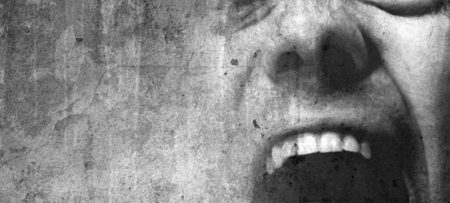Gray area drinking is hard to define and diagnose. We have been working with only two possible narratives around people who consume alcohol: either you are an alcoholic, or you are not an alcoholic. There has not been a third, fourth, or fifth narrative for those drinking alcohol. That's where gray area drinking comes in! Gray area drinking includes those people who do not feel like they are alcoholics but do drink more often and in larger quantities than they want or feel healthy and balanced. They enjoy a glass of wine or bottle of beer after work but end up drinking much more and falling asleep on the couch. Some gray drinkers determine it is best for them only to drink alcohol one or two times per week but end up drinking five or six nights. They have not paid the same degree of consequences in their life that alcoholics have and are acutely aware that this is not the best they can be doing for themselves and the people that matter most. Gray area drinkers want more from life and do not think going to rehab or A.A. makes sense.
...
8 results for tag: Alcoholism
Author Michael Swerdloff On How to Begin, Navigate, & Sustain Sobriety
In a world where the journey towards sobriety is often challenging and deeply personal, understanding the pathways and strategies for achieving and maintaining sobriety is crucial. This series aims to provide insight, encouragement, and practical advice for those who are on the road to recovery, as well as for their loved ones and support networks. As a part of this series, I had the distinct pleasure of interviewing Michael Swerdloff.
"Create a recovery team/support system. For me early on, having friends in AA, a sponsor, and a therapist was a lifesaver. Knowing I was not alone and others were going through or had already gone through similar messes felt supportive and comforting, as well as helping me not contact people who were not good for me to be around."...
Why I Keep My Car & Desk Messy
Why I Keep My Car & Desk Messy.
I have another article published in the Elephant Journal. Here is an excerpt. The full article can be accessed through the link below.
"When I used to consume alcohol and drugs, everything in my life was messy. My bedroom was messy. My refrigerator was messy. My bathroom was messy. My laundry was messy. My car was messy. My relationships were messy. My legal situation was messy. My finances were messy. My friendships were messy. My mind was messy. My body was messy. If I got involved, it would be messy."
Please read the full article here Why I Keep My Car & Desk Messy.
I look forward to ...
How I Got Sober and What I Now Know About the Impacts of Alcohol
How I got sober in September of 1989 was incredibly anti-climactic. Nothing was particularly awful or special about when or how I got sober. It was a Monday night, three days before I went for an alcohol assessment. I wanted to "beat the test," so I stopped drinking in advance to prove that I was n0t an alcoholic. I know; it's pretty funny, actually.
Even though I have been clean and sober since September 11, 1989 (Yes. September 11th, but twelve years before THAT September 11th), my recovery has four separate phases.
How I Got Sober - Phase One
The first phase was short-lived. I was going to an outpatient program four nights per week and AA/NA meetings the other days. I hated all of it, was not interested in what they had to offer, and was only complying to prove to my girlfriend at the time and her therapist that I was not an alcoholic. I still chuckle when I think about it. That phase came to an end when I freaked out, drove my car over 100mph, passed a cop, had that cop pull me over and approach my car with his rifle pointed at me, and a whole lot of drama during the following twenty-four hours that lead to me being locked up in an in-patient mental hospital while "sober"....Addiction Is Not The Drugs, It’s The ACEs
How Iceland Got Teens to Say No to Drugs – The Icelandic Model
I become excited and inspired when I see concepts, ideas, and methods that I use in my work validated by international scientists and authors. The two articles that I have included excerpts from offer alternative ideas about the use and abuse of alcohol, tobacco, and drugs. From my experience, combining these two perspectives is the core of my work, supporting and facilitating shifting patterns, behaviors, obsessions, and addictions.
I typically integrate these three principles/methods for shifting unwanted patterns and behaviors.
- Exercises supporting the discovery and understanding of our patterns and thinking.
- Explore what we feel connected to, or the lack of connection, to people, animals, friends, family, and our environment. Create a plan to improve and expand our connections. (Read Johann Hari's views on addiction and connection at the bottom of this post.).
- Brainstorm interests, passions, and activities that we have either enjoyed in our past or present or would like to explore, including creative expressions, physical activity, opportunities to connect with the natural world, or anything that inspires or stimulates us. We follow the brainstorming process by implementing some of these interests and activities into our lives before or during launching into facilitating the shift in the unwanted behaviors. In short, let's find out what will inspire and stimulate you to replace the patterns, behaviors, and addictions that are problematic. (This parallels the process Harvey Milkman researched in the U.S. and implemented in Iceland, discussed in the main article focusing on teens and addiction.)
What Is Gray Area Drinking and What Can I do About it?
Learning To Meditate
Learning to meditate is hard. This is my experience with learning to meditate. I was coming up on six months clean and sober. My sponsor's sponsor, which I jokingly used to call my grand sponsor, was coming up on 40 years sober. I used to enjoy talking with old Bill often. He was kind, respectful, direct, and openhearted. These were all qualities that I had desired, but I did not know how to express them myself or know many people who did, for that matter. So I used to like to talk with him whenever possible. He was one of the few people I trusted even a little.
One night after a meeting, Bill came over and sat next to me. He smiled that soft, gentle smile that typically made me feel safe, if only momentary. On that particular Friday night, I was not able to tap into his smile in order to shift the sadness, desperation, and frustration I was experiencing. Bill noticed this immediately. He leaned over and put his right hand on my left elbow, "How are you doing, young man?". Bill was old enough to forget pretty much everyone's name, and we were all either Young Man or Young Woman, regardless of age or any other identifying factors.
I let out a deep sigh and felt my belly clinch, "I'm not doing so good, Bill. I go to meetings, I talk to my sponsor, I hang out with all my recovering friends, I pray every night before I go to bed, and every morning when I wake up, I still feel miserable. I feel like it's never going to get better for me, and there's nothing I can do about it."
 ...
...
 ...
... 





